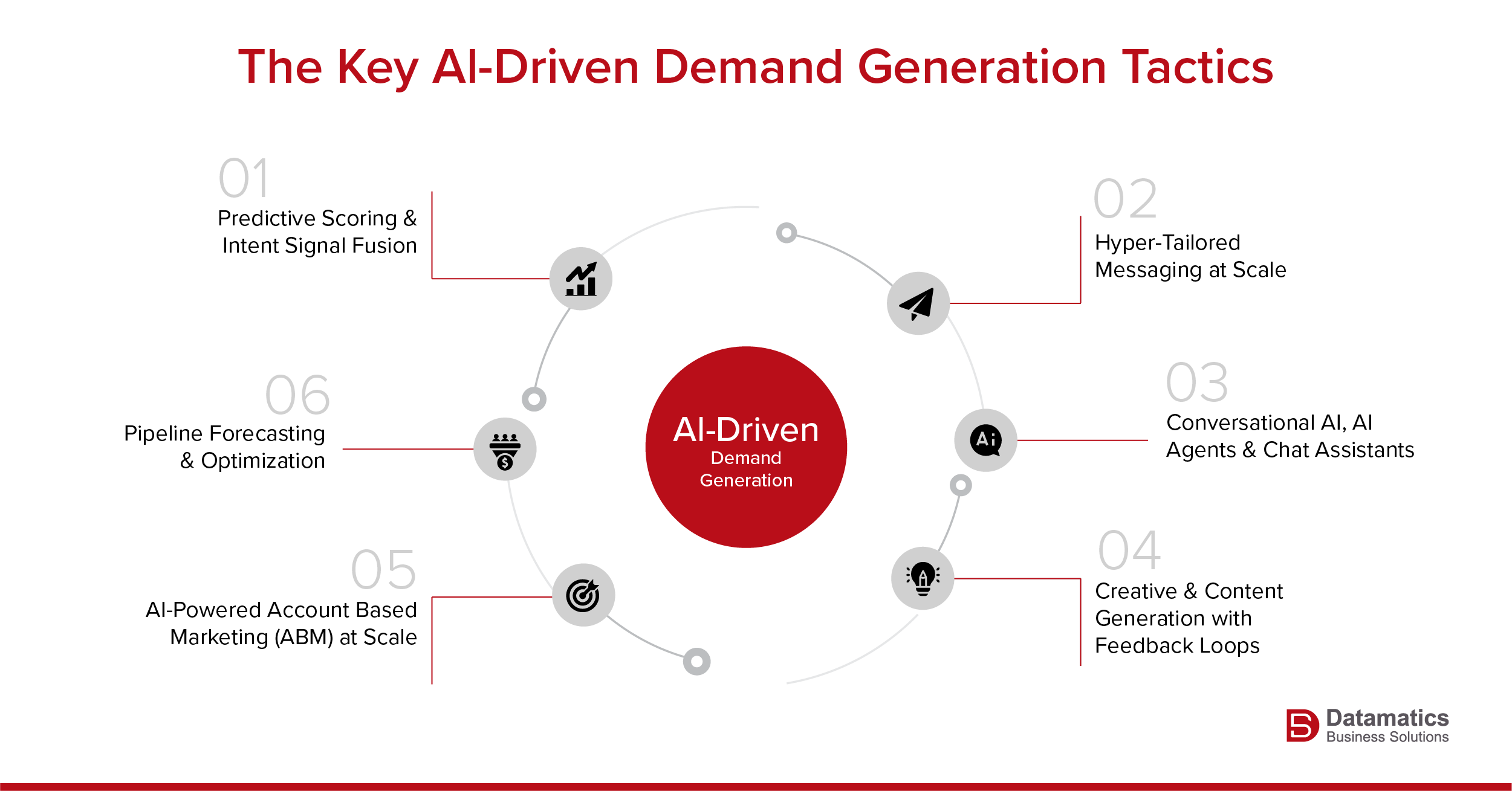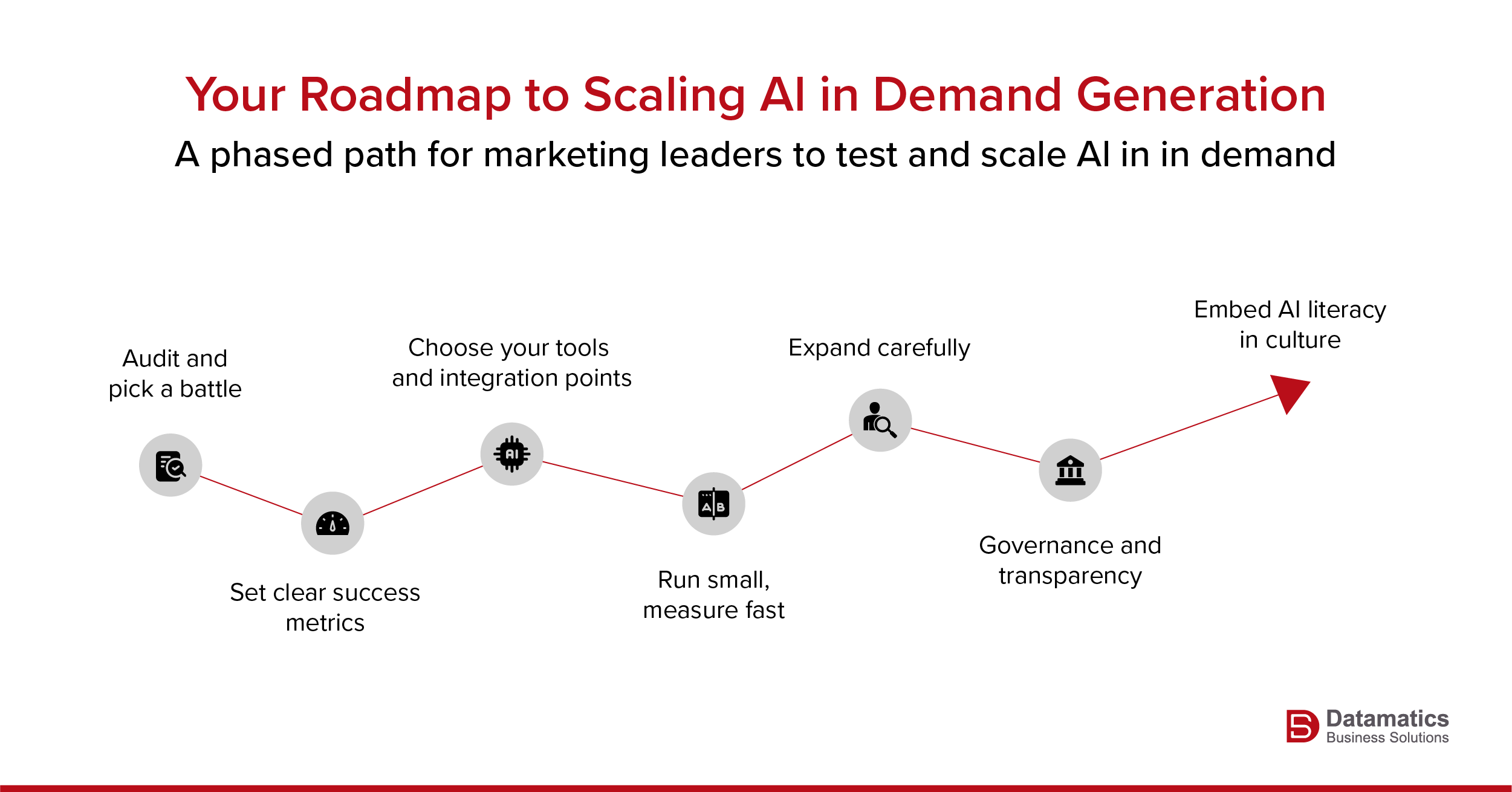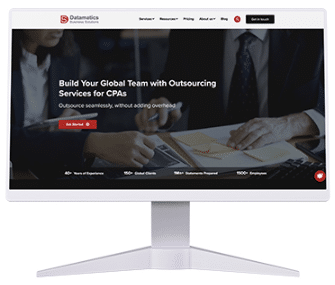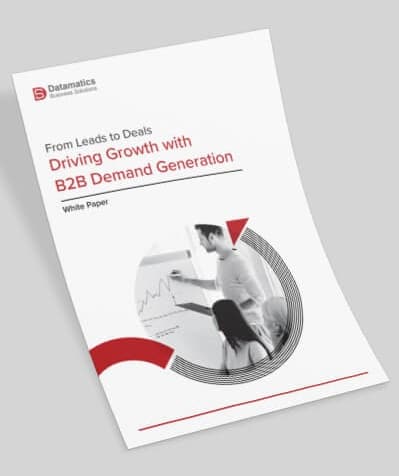Once upon a time, demand generation was all about shouting your message through TV ads and billboards, hoping someone would listen. It was about creating awareness about your brand. Then came the internet. Suddenly, marketers could track clicks, collect emails, and nurture real relationships with their audiences. As automation took over in the early 2000s, marketing campaigns became smarter. And more personal.
Today, with Artificial Intelligence predicting intent and creating content in real time, demand generation has evolved. It is no longer based on guesswork. B2B demand generation is now a data-driven art form.
Demand generation has always been a balancing act. You need to attract attention, nurture interest, and push prospects toward conversion. The aim was simple. To do all this without burning through budget or losing coherence of your brand message.
But in the past several years, something has shifted. Artificial intelligence is actively reinventing the way demand generation works, often in surprising ways. 69% of marketers state that they have already started using AI in their marketing operations.
If you are a marketing leader trying to keep your pipeline healthy in 2025, ignoring AI is no longer an option. In this blog, we will explore how AI is changing demand generation tactics, what to watch out for, and practical ideas you can test. Keep scrolling.
The New Demand Generation Landscape: Why AI Matters Now ?
Before diving into specific tactics, it is important to understand how AI is reshaping the broader demand generation strategy.
The global AI-in-marketing industry is pegged at about USD 47.32 billion in 2025. It is projected to grow at a 36.6% CAGR, reaching over $107 billion by 2028.
When it comes to lead generation, companies using AI report up to a 50% boost in leads and 47% higher conversion rates. Moreover, 41% of marketers already use AI in follow-up automations tied to lead magnets.
These stats show two things. First, AI is already creeping into demand generation practices. Second, when done right, AI can move the needle of demand generation.
But how exactly is AI influencing demand generation? Let us unpack the key tactics.
Key Takeaway
AI isn’t just a supporting tool anymore. It is reshaping the very core of demand generation. With its growing role in lead prediction, conversion optimization, and automation, AI is transforming how marketers attract, engage, and convert prospects.
What are the Key AI-Driven Demand Generation Tactics?

Below are six major ways AI is remaking demand generation. It also states how you, as a marketing leader, can tap them.
1. Predictive Scoring & Intent Signal Fusion
Traditionally, lead scoring has always been rules-based. Say X points for a whitepaper download, Y points for visiting the pricing page, and more. AI changes the game by applying statistical models, pattern recognition, and continuous feedback loops.
By combining first-party and third-party intent data (for instance, what keywords prospects are exploring, what topics they are reading), AI can flag accounts that are actively in-market. This can happen even sometimes before they fill out any forms.
In the new demand generation landscape, instead of waiting for someone to click “Request Demo,” you might detect that several employees of a target company are reading content about similar solutions. AI then bumps that account into your mid-funnel for you to further monitor or engage.
What are the advantages if you ask? Well, you don’t waste effort on low-interest contacts, and your team can intervene earlier in relevant scenarios.
2. Hyper-Tailored Messaging at Scale
Personalization is nothing new, but AI makes it fluid and dynamic. With AI, you can tailor email copy, subject lines, and CTAs in real time based on behaviors or persona signals.
You can adjust landing page content according to known visitor attributes (role, company size, past interactions). Furthermore, you can use generative AI to spin dozens of content variants automatically and test which version resonates most with your audience.
This kind of “smart personalization” helps reduce generic messaging fatigue and increase relevance. It lets you speak more directly without having to manually craft dozens of versions.
3. Conversational AI, AI Agents & Chat Assistants
Chatbots have matured. Now many AI agents can handle multi-turn conversations, qualify leads, route prospects, or even propose content paths.
These agents don’t just respond when triggered. They proactively follow up, set reminders, or nudge prospects who drop off. They can even link to CRM and keep the lead dossier updated.
Adobe, for instance, has rolled out AI agents integrated into its marketing stack to help brands tailor messaging based on user activity (for instance, distinguishing visitors from TikTok links vs search links).
By combining conversational logic with user context, these agents help sustain engagement without needing human labor. And when the prospect clearly becomes qualified, the baton can pass to a human rep.
4. Creative & Content Generation with Feedback Loops
Generating content, be it ads, images, blog posts, social posts, is time-consuming. AI is easing that load.
Brands are now using AI to create creative variants, test them, and let performance data guide for further iterations. For instance, a retail firm may generate 20 images for a campaign and let AI test which visuals drive more clicks.
A B2B brand may use AI to craft headline and ad text combinations. They can then feed performance back into the model for refinement.
In fact, companies like Klarna have used generative AI to slash marketing costs. They reportedly saved $10 million annually by automating image creation and trimming agency needs. Similarly, Zalando cut image production time from 6–8 weeks to 3–4 days by using AI and dropped costs by 90%.
But the key is not “let AI do it all.” The human and machine loop works best. Content created by AI, validated by humans, refined by performance, then iterated.
5. AI-Powered Account Based Marketing (ABM) at Scale
Account Based Marketing (ABM) is ideal for B2B brands targeting high-value accounts. AI lets you scale that precision.
By applying predictive models and intent scoring, AI can surface accounts that are likely to engage. Then you can build multi-touch programs for those accounts. This can include direct mail, personalized content, insights, and outreach. But all of these guided by AI insights.
You are not broadcasting to a million names. You are orchestrating a laser-targeted dance across carefully picked accounts, with AI helping coordinate content, timing, and sequencing.
6. Pipeline Forecasting & Optimization
Beyond direct tactics, AI also strengthens your demand-gen engine by improving forecasting. AI can analyze key demand generation metrics such as conversion velocity, lead-to-opportunity ratio, and content engagement to project pipeline progress more accurately.
That gives marketing leaders an early warning on underperformance, so you can reallocate resources proactively, drop underperforming channels, or open additional campaigns.
Key Takeaway
AI is redefining demand generation from every angle. It is enabling marketers to predict buying intent before prospects even raise a hand, craft hyper-personalized experiences at scale, and automate engagement with human-like precision. Demand generation is shifting from mass outreach to intelligent orchestration.
Frequently Asked Questions
Q1: What is demand generation and how is it different from lead generation?
A: Demand generation is the holistic effort of creating awareness, interest, and desire for your offerings across the full buyer journey. Lead generation is a subset of demand generation. It converts interest into contactable prospects. Demand generation includes content, branding, nurturing, and advocacy wrapped around lead generation.
Q2: Can small and mid-sized marketing teams realistically use AI for demand generation?
A: Yes. Many AI tools now integrate with common SaaS stacks (CRM, marketing automation). You don’t need your own research lab. Start small with lead scoring, content generation, and chat agents, and scale gradually.
Q3: How do you avoid the trap of “AI washing” in your demand-gen strategy?
A: AI washing is when you overstate AI’s role or present superficial AI features as transformative. You should avoid this by being transparent about what AI does, ground-truthing with human oversight, measuring actual outcomes (not vanity metrics), and tying AI to business goals (pipeline, conversion).
Q4: What skills or team changes are needed to support AI-driven demand generation?
A: You will want people to be comfortable with data, model outputs, performance iteration, and cross-functional collaboration. You may want roles like “AI Campaign Analyst” or “Data + Content Ops.” Also, clear governance (data privacy, monitoring, ROI tracking) is essential.
Q5: What performance metrics matter most for AI-powered demand gen?
A: While you will track traditional ones like MQL to SQL conversion, pipeline contribution, cost per qualified opportunity, but you also, need to track newer ones like lead latency (how fast AI surfaces high-intent leads), content variant lift, model prediction accuracy, and “wasted leads” (false positives).
AI in Demand Generation: Challenges, Risks & Guardrails
Without a doubt, Artificial Intelligence presents marketers with incredible opportunities. However, it is not a panacea. It requires supervision, boundaries, and a healthy dosage of human intervention. Here are some of the pitfalls to watch out for:
1. Data drift and bias
The fairness of AI models depends on the quality of the data they are trained on. The algorithm will pick up biases and replicate them if your past data favors particular client categories or channels. You have to maintain the integrity of your AI. It requires regular audits and a variety of data sources to avoid bias.
2. Complacency and over-reliance
Although it is easy to “set and forget,” AI isn’t perfect. Algorithms may magnify anomalies or misinterpret intent. Keep people informed at all times so they can evaluate the results, particularly when adoption is just getting started.
You can also read: How Does Demand Generation Work? A Deep Dive into B2B Growth
3. The issue of the black box
Certain AI programs produce predictions or lead scores without any discernible logic. It may be difficult to defend choices or modify strategies due to this lack of transparency. Select platforms that give explainability, or at the very least, transparency into the logic of the business.
4. Concerns about privacy and compliance
Tremendous responsibility comes with tremendous data. Tracking intent and behavior must comply with privacy regulations like the CCPA and GDPR. Always be open and honest about how data is used and provide consumers with significant control over their data.
5. Creative stagnation and AI fatigue
Marketing may become monotonous if all brands rely too much on generative AI. The emotional spark of all collaterals, be it ads or blogs, comes from human ingenuity. So let AI handle the heavy lifting while maintaining direction with human intervention.
At its best, AI is meant to support human marketers rather than replace them. Businesses that create a harmonious alliance between data, technology, and human intelligence will succeed more than those that automate everything.
Key Takeaway
Demand generation can be greatly enhanced by AI, but only when combined with ethical supervision and human judgment. The most astute marketers utilize AI as a co-pilot, not the driver, to avoid data bias, over-reliance, and creative weariness. The key for success is straightforward: computer intelligence and human creativity combined.
Marketing Leaders’ Roadmap to Scaling AI in Demand Generation

A phased path for marketing leaders to test and scale AI in demand generation.
1. Audit and pick a battle
Choose one pain point (e.g. lead scoring, outreach fatigue, content bottlenecks) and insert AI into it as a pilot.
2. Set clear success metrics
3. Choose your tools and integration points
Look for AI modules that can plug into your existing MarTech stack (CRM, MAP, analytics). You don’t need to rewrite the stack.
4. Run small, measure fast
Test with a subset, compare AI-assisted vs control groups, collect feedback, and refine model thresholds.
5. Expand carefully
Once the pilot shows promise, scale across channels or to adjacent tactics (e.g. from email scoring to chat agents). But always maintain human audit.
6. Governance and transparency
Build review boards, documentation, model versioning, and human override mechanisms. Ensure ethical usage and auditability.
7. Embed AI literacy in culture
Upskill your team so they understand what AI can and cannot do. Tool operators should know when to push back or override an AI suggestion
If you follow this roadmap, you will soon see AI-generated insights become part of everyday decision-making. Not a side experiment.
Final Thoughts
We are at a turning point in demand generation. AI is no longer theoretical. It is now reshaping how marketing leaders plan, execute, and measure. But only brands that temper boldness with discipline will win this battle. If as a marketing leader you let AI assist you, not replace, you will come out on the top.
If you weave AI into your demand engine carefully, one tactic at a time, measured and governed, you can begin pushing demand generation earlier, more intelligently, and with better ROI.
As one of the most trusted demand generation companies, Datamatics has been helping businesses build stronger pipelines for over 50 years. Combining strategy, data, and technology, Datamatics is a leading demand generation services provider. You will get everything from content syndication to appointment setting. The goal is simple. To deliver sales ready leads to our clients.
Interested to learn more about demand generation services. Fill out the form here and our experts will get in touch with you.
Subscribe to our newsletter and stay ahead of the trends.

Paul van de Kamp


